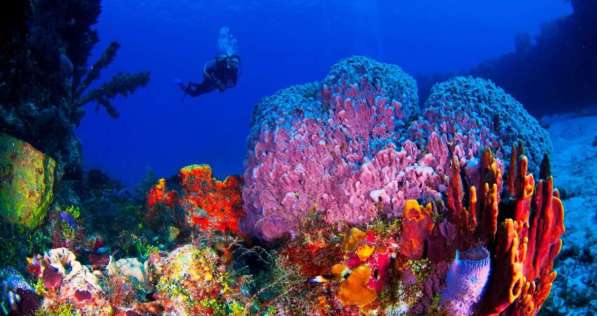“……in a single day and night of misfortune, the Island of Atlantis disappeared into the depths of the sea.” -Plato 360 B.C. (From Atlantis: The Lost Empire. Walt Disney)

Palancar Caves, Cozumel. Mesoamerican Reef
The reef, the magnificent reef. These coral structures both are delicate and bold. They are the forests of the seas, the secret gardens held in writer imaginations. They are explosive, vast, visual caverns with peaks and troughs. But also soft and intimate brain puzzles. Simple in colour sometimes, and then sometimes not, with a cacophony of intense, vibrant coloured hues. Coral is Atlantis in the imagination, both elusive and fascinating. Every life has a purpose here, accurately working on maintaining a delicate balance and keeping the equilibrium.
I started diving for the first time on Cozumel, an Island in the Mexican Caribbean just a few weeks ago when I came to live here. I found myself staring at the coral as much as the fish. Then I noticed I was looking more at the coral than the fish. Though, when I spotted a little Pipehorse I did get super excited. Ok well, same goes for Spotted Eagle Ray, Blacktip Reef Shark, Hawksbill Turtle, The Splendid Toadfish (actual name), Spotted Moray Eel et al.. Now I’m name dropping! Sometimes I just can’t describe accurately enough how they can blow one’s mind. Maybe that is in part the drug of diving. You can’t, so you dive again to be in that unique space, that water space universe. But today for first time armed with a torch I looked again as I had many times before at a light, opaque soft coral. They are shaped and the size of a small planter. I could see this time that it was bright white and it’s edges tipped with fluorescent pink. An underwater rave! It’s not the only one, many other corals have fluorescent colours. See the Great Star below. Not that you’d know it here…

Montastraea Cavernosa, or Great Star coral, is a hard builder ‘mountain’ coral.
How to describe the whispering surface? It gently shudders and vibrates like cat hair being blown by a human in the water.
I’m an artist and I couldn’t believe the first time I saw these richly coloured marine mountains, caves and forests. I felt an immediate magnetic pull and an easy instant love. I had to know more. Turns out they are imperative to our survival on earth. Bet you didn’t know that.
The Way of the Complex and Sensitive Warrior!
Coral reefs are one of the most diverse ecosystems on the planet. They cover less than 0.1% of the surface of the world’s ocean, yet support more than 25% of all marine life. Thanks to their diversity, provide millions of people with food, medicine, protection from storms, and revenue from fishing and tourism. An estimated six million fishermen in 99 reef countries, over a quarter of the world’s small-scale fishermen, harvest from coral reefs. Estimates suggest around 2 million different species live in and around them and produce some of the oxygen we breathe.
I spoke with Ernesto Hevia Del Puerto who is an oceanographer and co-founder of Cozumel Ocean Research (COR) who educated me on coral reefs systems and the one in our back-yard, the Mesoamerican Reef. He said ‘….healthy coral reef systems are like good neighbourhoods, in that good ones need a balance of workers to help the place function well. You can measure a healthy reef in four ways. The quantity of living coral, algae, herbivorous fish (Parrot, Angel) and commercial fish (Snapper, Grouper).’
As with every neighbourhood, there are the good guys and the bad guys. Reefs are formed of colonies of coral polyps held together by calcium carbonate. Most coral reefs are built from stony corals, whose polyps cluster in groups, they are good guys. They build the community to be able to provide food and shelter for the marine life. On top of the builders grow the soft corals like Sea Fan and Finger, Tunicates (sponges) and Hydro corals. These are often the fine, vibrant, sensitive structures that you see.
The most important coral family is the hard coral. They are made of a rigid calcium carbonate (limestone) and appear like rocks. Each polyp secretes a hard exoskeleton made up of calcium carbonate and a chalky internal skeleton that stays in place even after they die. As each generation of polyps dies and their exoskeleton remains, the coral grows a bit larger and because each polyp is so small, hard corals grow at a very very slow rate. They called the ‘builder’ corals and without them, a coral reef cannot exist. Examples of the builders are Brain, Staghorn and Mountain coral.

Brain. A hard ‘builder’ coral.

Staghorn, also a ‘builder’. A huge head of Staghorn was lost during hurricane Wilma 2005 in Cozumel. There are gratefully small ones now growing back.
The coral need sunlight, clear water, warm water temperatures and clean water to be able to exist.
Sunlight. Corals need to grow in shallow water where sunlight can reach them. Corals depend on the algae that grow inside of them for oxygen and other things, and since these algae need sunlight to survive, corals also need sunlight to survive.
Clear Water. Corals need clear water that lets sunlight through, they don’t thrive well when the water is opaque. Sediment and plankton can cloud water, which decreases the amount of sunlight that reaches the zooxanthellae (algae).
Warm water temperature. Reef-building corals require warm water conditions to survive. Corals generally live in water temperatures of 68–90° F or 20–32° C.
Clean Water. Corals are sensitive to pollution and sediments. Sediment can create cloudy water and be deposited on corals, blocking out the sun and harming the polyps. Polluted water discharged into the ocean near the reef can contain too many nutrients that cause seaweeds to overgrow the reef.
The second element to a healthy reef is the algae. Corals depend on the Zooxanthellae (algae) that grow inside of them for oxygen and other things. Problems arise as algae are always looking to take over the community. They are the bad guys. I liken them to capitalists without a conscience who will spot a weakness in the system, take advantage that never ceases. The fight eventually becomes futile as the algae take over, the community breaks down. Sound familiar?!
The herbivorous fish feast on the algae, they are the gardeners of the reef. They nibble and trim it back, helping keep the algae in its place.
The last element to the ecosystem is the commercial fish. They eat the herbivorous fish, therefore, keeping a balance. Through overfishing the commercial fish become scarce, the fisherman then turn their attention to the herbivorous fish like the Parrot Fish for their catch. As these fish provide a vital gardening service to maintaining the reef it allows the algae to dominate.
“Thousands have lived without love, not one without water.” -W.H. Auden, British poet
The dirty facts
They are numerous threats to the sensitive ecosystems and are quickly affected by water acidification, rising water temperatures, air pollution, overfishing, water pollution and plastic.
Ocean Acidification. Our seas absorb as much as a quarter of all man-made carbon emissions from burning fossil fuels, which changes the pH of surface waters and leads to acidification. Ocean acidification reduces the amount of carbonate, a key building block in seawater, it makes it difficult for marine calcifying organisms, such as coral and some plankton to form shells and skeletons, and existing shells may begin to dissolve.
Water temperatures. A sharp increase in water temperatures can cause coral bleaching and eventual death to the coral. Bleaching occurs when coral become stressed by heat, cold, chemicals, or other factors. In 2016, a third of the worlds’ largest reef, The Great Barrier Reef died from coral bleaching.
Water pollution. We know that all streams flow to the rivers and that all rivers lead to the seas. Therefore whatever we have been doing to and on our earth runs into the oceans. They are drowning in chemicals, waste, plastic, and other pollutants. Some 80% of the world’s wastewater is dumped, largely untreated back into the environment, polluting rivers, lakes, and oceans.
Seas of plastic. The majority of rubbish ( I’m British! US, garbage) that enters the ocean each year is plastic. While some are dumped directly into the seas, it is estimated 80% makes its way there gradually from land-based sources, including those far inland. This comes via storm drains, sewers, and other routes. In 2017 we produced more than 400 million metric tons of plastic. That’s just one year. It’s on the rise as you might imagine. But perhaps you hoped due to an increasing awareness that it may be on its way down. Sadly it is not. 80% of plastic is recyclable, but we recycle just a minuscule 9-11%.
In 2016, we produced 365 million tons of plastic. In 2017, 400+ million. It is still hanging around most of it in our oceans. We need to kick the habit before it kills us.
“The secret of change is to focus all of your energy, not on fighting the old, but on building the new” -Socrates.

Cozumel Reef Diving.
The Sequel
When there is a sequel, they always leave you hanging, don’t they?
In Part two, I will focus on the second largest reef, the Mesoamerican Reef. This system from starts at the tip of the Yucatán Peninsula down to Belize, Guatemala and the Bay Islands of Honduras. Sometimes known as the Great Maya Reef, it provides Cozumel with some of the most beautiful and spectacular underwater sights in the world.
I will look at the specific threats to our own reef system here and also explore what is being done to support it. A happy ending? Wait for the sequel!
Further reading
The wonderful not-for-profit org! Inform, volunteer, donate: www.cozumeloceanresearch.org
Mesoamerican Reef: www.healthyreefs.org
Donate, inform: www.nature.org/ourinitiatives/regions/latinamerica/mexico/explore/our-work-in-mexico-oceans.xml
Reef watch: www.agrra.org
Be warned forewarned
https://www.nytimes.com/2018/04/19/world/australia/australia-barrier-reef.html

